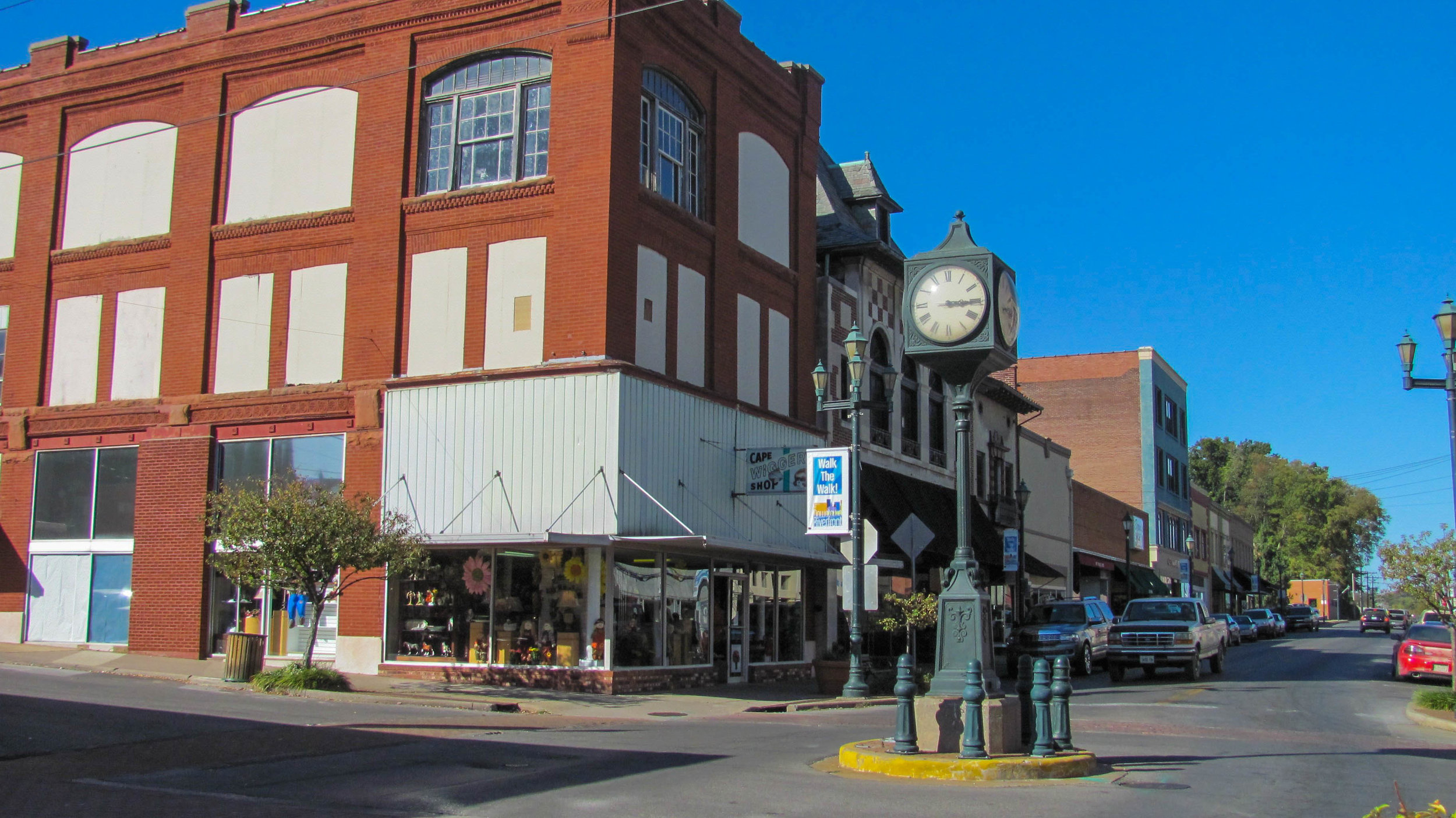Visitors Guide to Sikeston
Scott County, Missouri
Sikeston Depot Museum
Sikeston is the largest town in Scott County any by way of Interstate 55, Sikeston is close to the halfway point between St. Louis and Memphis. When the first settlers came to the Sikeston region, they were found a wild and varied landscape of cypress swamps, marshes and bayous covered the ground. Bottomland forests of oak, hickory, gum, cottonwood, and sycamore grew wild, and prairies stretched as far as the eye could see. Sikeston began as a railroad depot. In 1853, a group of businessmen from Arkansas, Kentucky, and Tennessee met in nearby Benton to organize a railroad and formed the Cairo & Fulton Railroad. In 1860 Sikeston was platted by John Sikes in anticipation of the completion of the Cairo and Fulton Railroad. The site chosen was along the proposed railroad route where it crossed the old El Camino Real, the Kings Highway, a trail used since the days when Spain controlled the territory of Missouri. Today Kingshighway, also known as Business US serves Sikeston as a primary north-south thoroughfare and is lined with businesses and older historic homes. Sikes set aside property along the proposed railroad route thus assuring Sikeston a railroad depot.
Although Sikeston was only a small village during the Civil War, its position at the railroad and highway intersection gave it some importance. At one point, Confederate General Jeff Thompson robbed a bank in nearby Charleston to pay men and buy arms and supplies. Legend has it that he hid part of his money under one of the oak trees at the corner of New Madrid Street and Kingshighway. In 1862 Federal General John Pope used the town as a garrison while waiting for heavy guns from Cairo, Ill., to be used at the Siege of New Madrid. Sikeston was also used as a supply depot of in the Civil War and the track between Sikeston and Charleston were torn up to stop supplies from arriving in the area. The Cairo Fulton was the only railroad to add track during the Civil War.
After the war, the railroad became known as the CAT Line…Cairo through Arkansas to Texas. The CAT Line defaulted on bonds issued by the state of Missouri after the war, and ownership was transferred to the Iron Mountain Railroad. By 1900, Sikeston had a population of 1,100 and had two banks, two newspapers, and three hotels. In 1905 planning for the Little River Drainage District began in order to drain the swampland to make it available for farming. This engineering feat, the largest drainage district in the nation, drained over 1.2 million acres of land. The drainage was accomplished from 1914 to 1928 through construction of over 950 miles of ditches and some 300 miles of levees. When the project was completed, more than one million cubic yards of earth had been displaced, a greater amount than was moved during the construction of the Panama Canal, and some of the nation’s richest farmland had been uncovered. This allowed farmer to plant fields of cotton, corn, wheat, soybeans, and vegetables.
In 1916, the Iron Mountain Railroad began building the present depot. Soon after the building was constructed, the line was acquired by the Missouri Pacific Railroad Company. It remained a Missouri Pacific station until the company merged with Union Pacific in 1982. The Sikeston Depot was last used a railroad depot in 1985. In 1997 planning began to revitalize the Depot and in 2000 it reopened as the Sikeston Historical and Cultural Center, also known as The Sikeston Depot Museum.
Today Sikeston is a modern community offers all the amenities travelers need and enjoy. It is an exciting place all year round that features annual events and interesting historic sites. To make the most of your visit stop by the Sikeston Convention & Visitors Bureau at 128 N. Madrid Street in the downtown area of Sikeston. While you’re here you will want to stop off at the historic depot and stroll through beautiful downtown. One of the Midwest’s largest rodeos featuring top-notch entertainment takes place at Sikeston in August. Numerous dining options are available from the famous Lambert’s Café, home of the “Throwed Roll”, to neighborhood grills and locally owned restaurants. And with ten hotels and motels in the area you can be sure you will experience the best in Southern Hospitality. Don't forget the Sikeston Factory Outlet Stores, the only outlet center located between St. Louis and Memphis that features merchandise from leading manufacturers at fantastic prices.
www.visitsikeston.com - The official website of the Sikeston Convention & Visitors Bureau.













